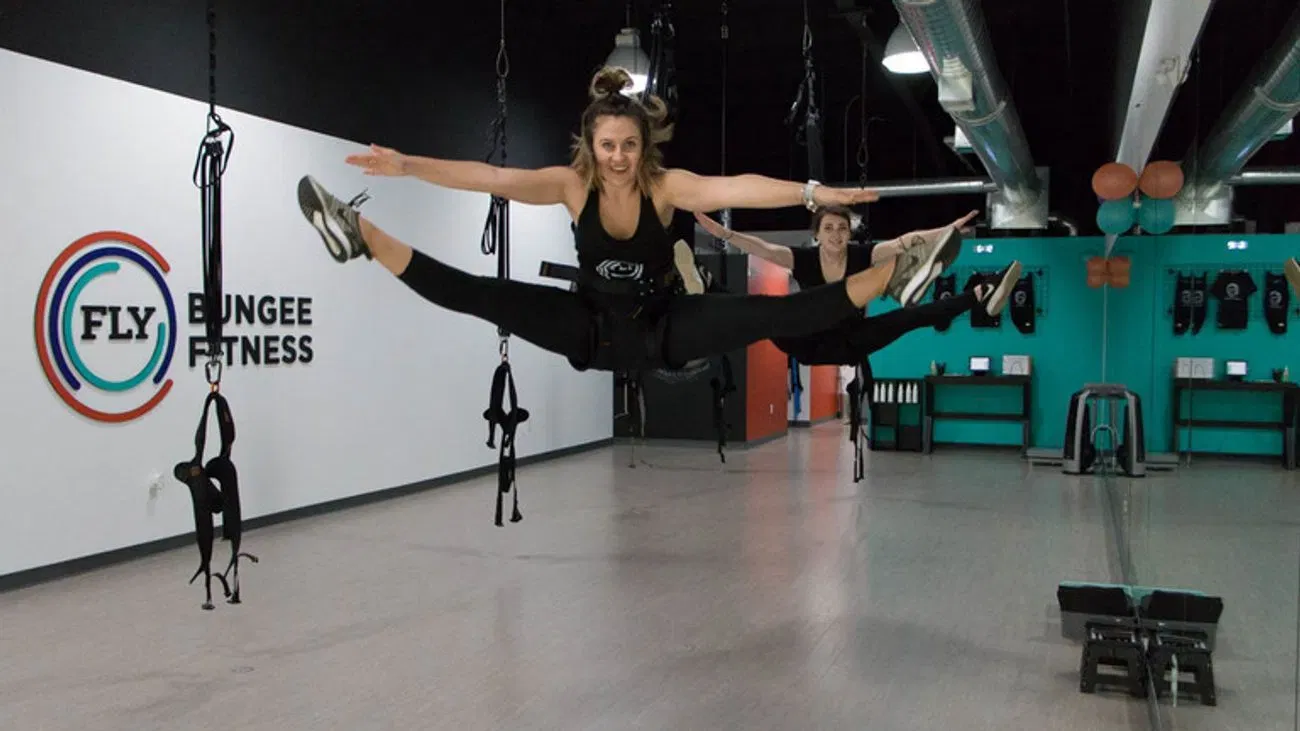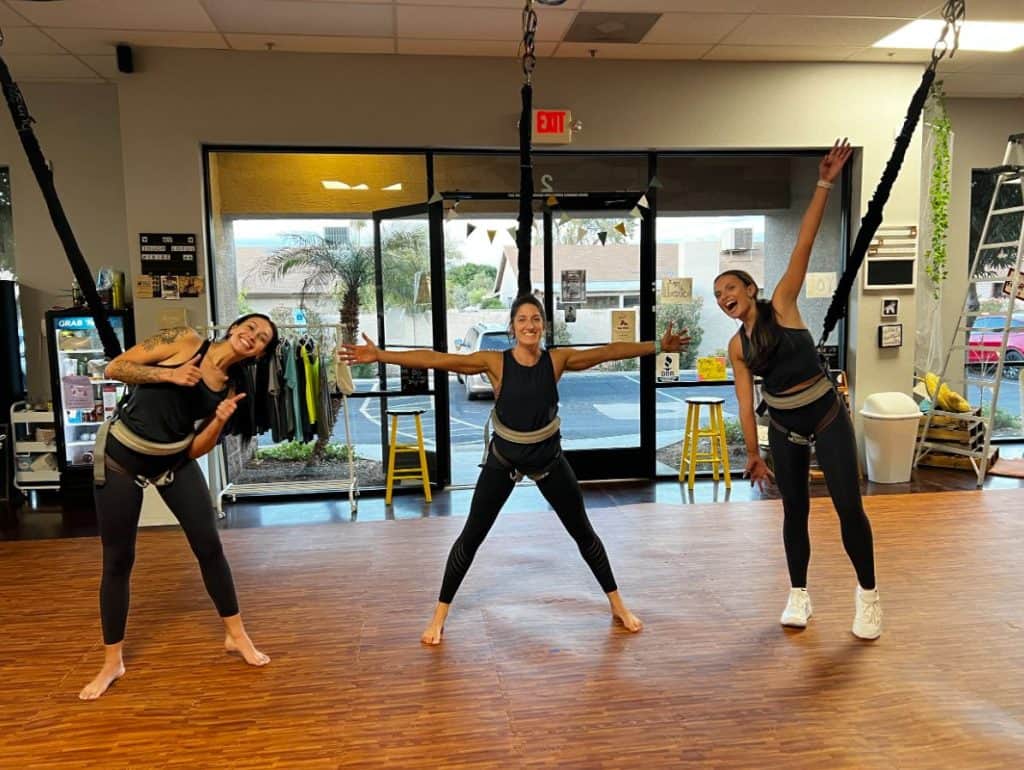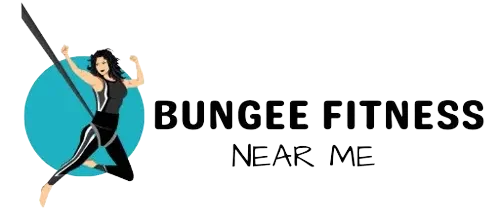10 Surprising Benefits of Bungee Fitness

Bungee fitness still looks like a Marvel montage the first time you see it – athletes clipped to ceiling cords sprinting, leaping and spring-boarding into the air. Yet, what started as a niche class for stunt-curious gym-goers has turned into one of the fastest-growing low-impact workouts in the United States. Studios across the country report growing wait-lists for beginner ‘flight school’ sessions and for good reason: the benefits stretch well past the cool Instagram clips they facilitate.
Below, you’ll find ten benefits of bungee fitness, plus a quick primer on what to expect the first time you suit up.
1. Your Joints Get a 70% Load-Lightening Gift
The harness and industrial-grade cords do more than bounce you skyward – they absorb up to 70% of your body weight on landing. Studios like Level Up Bungee advertise this figure front-and-centre because it allows for people with dodgy knees or post-surgery ankles to move explosively without the usual pounding associated with regular exercise options.
Why it matters: reduced ground-reaction force means less cartilage wear, fewer next-day aches and a green light for folks who find traditional plyometrics punishing.
2. Calorie Burn on Par with HIIT – Minus the Slam
Because you’re never truly ‘resting’ (every step fights cord tension) a 45-60 minute class can burn roughly 400-600 calories, as demonstrated in real-world studio tests; some outlets even clock up to 500 calories in shorter ‘power’ formats. The metabolic kicker: after-burn. Your heart rate yo-yos throughout class, nudging post-workout oxygen consumption higher for hours.
3. Strength Gains – Especially in the Sneaky Stabilisers
A 2020 paper in the International Journal of Environmental Research and Public Health found that squats performed on unstable platforms (BOSU, foam pads, etc.) strengthened more muscle fibres in the quads and glutes than the same moves on solid ground. The bungee cord is a moving platform that never quits – every jump, plank or push-off demands constant micro-corrections from your core, back and hips. In other words, functional strength without dumbbells.
4. Balance & Proprioception Go Into Hyperdrive
Harvard’s balance researchers remind us that practising instability through balance training lowers fall risk and improves posture as we age. Mid-air squats, single-leg kicks and corkscrew spins challenge the inner-ear and ankle stabilisers simultaneously, teaching your body where it is in space (even when ‘space’ is three feet off the floor).
5. Dynamic Flexibility – No Floor Stretching Required
Instead of static hamstring holds, the cord lets you glide into hovering lunges or assisted backbends, cycling muscles through length-shorten-length patterns. Recent meta-analysis work shows dynamic stretching improves functional range of motion and agility better than static holds – think of it like an active yoga class, minus the mat.
6. Built-In Mood Chemistry
Aerobic effort already spikes endorphins, but the novelty factor adds another biochemical layer. Exercise-neuroscience reviews note reliable bumps in dopamine and serotonin during vigorous training – neurotransmitters tied to motivation and calm. When the movement itself feels playful and new, enjoyment and adherence climb even higher; Frontiers in Psychology flags novelty as a key driver of long-term exercise habit-forming.

7. Scalable for Total Beginners and Pros
Studio cords come in multiple resistance grades and instructors shorten or lengthen them to match each flyer. Many bungee fitness providers cap sessions to smaller groups so coaches can tweak setups on the fly and keep everyone safe. That means rehab clients can stick to gentle rebounds while seasoned athletes can stick to breaking out 360-degree flips in the same room.
8. A Confidence Rocket
Nailing your first levitating push-up triggers a very real self-efficacy boost. Adventure-sport research links high-skill, risk-perceived activities with significant gains in resilience and personal agency – benefits that linger long after class. Few feelings match touching down after a somersault you never imagined it was even possible for you to do.
9. Social Glue in a Lonely Era
Cigna’s 2025 ‘Loneliness in America’ data shows 58% of U.S. adults qualify as lonely. Bungee classes – usually small, high-energy and filled with ample high-fives – bake community into the workout. Regulars often describe the camaraderie (‘Did you see that save?’) as addicting as the exercise itself.
10. Exercise That Feels Like Play Leads to Consistency
The plain old truth is that fun breeds commitment. Ultimately, people stick with movement they enjoy and novelty supercharges that enjoyment. The same Frontiers paper above argues that varied, playful sessions predict a far higher adherence than repetitive routines; add pumping music and a literal flight sensation and your brain will quickly file ‘workout’ under ‘recreation,’ not ‘chore.’
Beyond the Benefits: What a First Class Looks Like
Set-Up (10 min)
You’ll step onto a scale so the coach can choose cord resistance, then wriggle into a climbing-grade waist harness over snug leggings (loose shorts can snag).
Flight School (15 min)
Expect drills: tiny bird-hops to learn tension, forward ‘Superman’ runs and backward fall-and-catch drills that teach trust.
Main Set (20–30 min)
Think circuits – plank-to-pike tucks, bouncing lateral lunges, sprint-and-fly burpees; heart-rate spikes mimic HIIT intervals without the knee grind.
Cool-Down (5 min)
The cord becomes a stretch strap for assisted hip openers or floating child’s pose.
Most studios limit classes to 45-60 minutes and weight ranges of about 90-250 lbs for equipment safety. Always flag recent surgeries, pregnancy or vertigo to your instructor beforehand.
Safety & Gear Tips
- Layers and padding. A snug tee under the harness prevents waist rub; some flyers add a neoprene belt pad for extra comfort
- Grippy shoes or barefoot? Policies vary, so be sure to ask ahead. Shoes absorb landing force; socks or bare feet improve tactile feedback
- Hydrate early. You’ll sweat like a spin class but may forget to sip mid-bounce. Bring a bottle of the best bottled water for topping up with between drills
If motion sickness is a known foe, pop a ginger chew ten minutes before liftoff. Most newbies acclimate within two sessions.
Who Should Press Pause
- Unhealed abdominal or spinal surgery (harness pressure)
- Late-stage pregnancy unless cleared to use overhead-strap formats
- Active vertigo disorders
Cleared by your doc but still nervous? Book a private intro lesson – many studios offer one-on-one ‘ground school’ before tossing you into a group.
The Take-Off
Bungee fitness isn’t just circus fun; it’s evidence-based movement that spares your joints, lights up your muscles and refreshes your mood in one gravity-bending package. Clip in once and you’ll understand why so many first-timers walk out grinning – and come back for the confidence high.
So, tighten that harness, take a deep breath and take the leap; the floor will be waiting, but you might find you’d rather keep flying.
